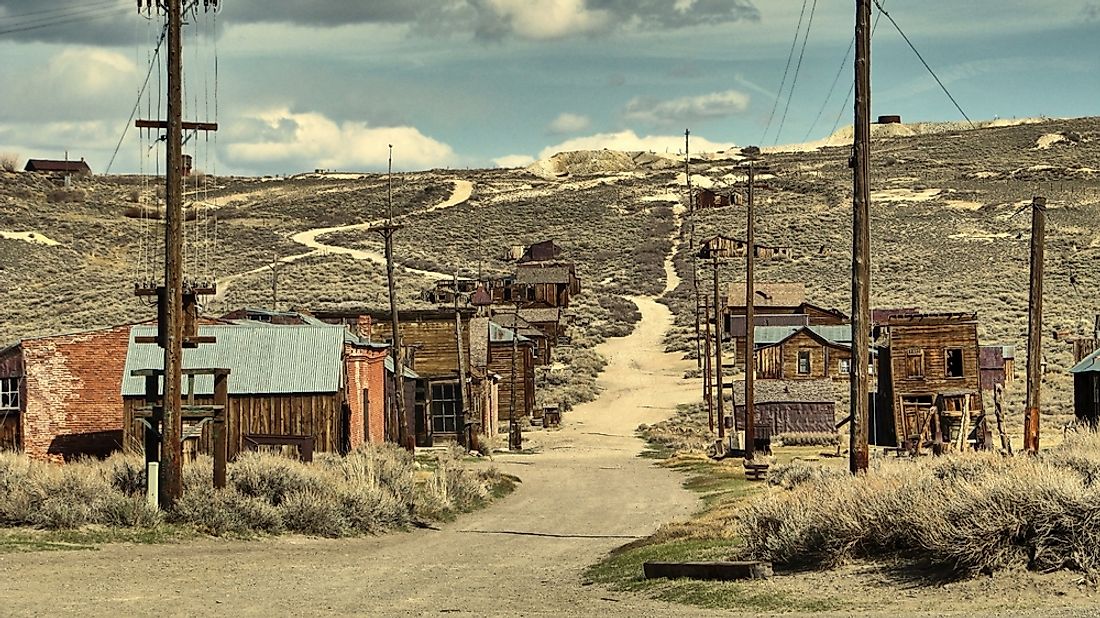Ghost Towns of America: Bodie, California

Bodie is a ghost town located in the Bodie Hills of Mono County, in the US state of California. The location of the town is 75 miles southeast of Lake Tahoe and 12 miles east-southeast of Bridgeport City. Bodie has an elevation of 2,554 meters. The US Department of the Interior recognizes Bodie Historic District as a National Historic Landmark. As a result, the town receives approximately 200,000 visitors yearly. The Bodie Foundation is responsible for the administration of Bodie Town since 2012.
The Bodie Gold Rush
Bodie began as a mining center in 1859 due to the discovery of gold by W.S.Bodey and other prospectors. Unfortunately, Bodey passed on the following November while on a supply trip to present day Mono City in California. The small town embraced the name “Bodie” after him. About the same time as prospectors discovered gold in Bodie, there was also the discovery of silver at Aurora and Comstock Lode in Nevada. However, the silver mining ventures boomed in these towns while the gold mining in Bodie slacked. By the year 1868, the two stamping mills built by two companies failed.
Eight years later, the Standard Company discovered a profitable gold-bearing ore deposit in Bodie. The discovery of gold stirred up the mining business boom in Bodie and attracted many people to it. By 1879, the population of Bodies was around 5,000 to 7,000 people. In addition, there were about 2,000 buildings in the town. As years passed on, the value of gold at Bodie was approximately US$34 million. The town had nine stamp mills and the gold company transported the gold bullions to either Carson City or San Francisco for minting. During the boom, Bodie had a telegraph line, the Wells Fargo Bank, four volunteer fire companies, a railroad, a cemetery, a mortuary, and a jail. In addition, the Standard Pioneer Journal of Mono County published a thrice-weekly newspaper. With time, there were daily printing of newspapers in Bodie town. Bodie also had its own Chinatown with hundreds of Chinese residents. At the peak of the gold mining business in Bodie, the town had 65 saloons. Murders, stagecoach holdups, barroom brawls, and shootouts became common occurrences.
The Decline of Bodie
There were signs of the decline of Bodie town in the early 1880s. By the end of the year, it became obvious that the town was taking a downhill turn. Bodie miners were get-rich-quick people. When they heard of promising mining booms in Arizona, Montana, Tombstone, Utah, and Butte they were drawn away from Bodie. The population of the town declined significantly. As a result, the mining town turned into a family-oriented community. The residents built the Methodist Church and Roman Catholic Church in 1882. The Methodist Church still exists today, however the Roman Catholic Church burned in 1930. During this period, the gold mines produced gold worth US$3.1 million. Furthermore, a new railroad called Bodie Railway & Lumber Company was built. It facilitated transport of cordwood, mine timbers, and lumber to Bodie town. The population kept decreasing until only 698 people were left in 1910. In 1913, the Standard Consolidated Mine shut down, and in 1914 the last gold mine closed down. The town received the label of “ghost town” the following year.











